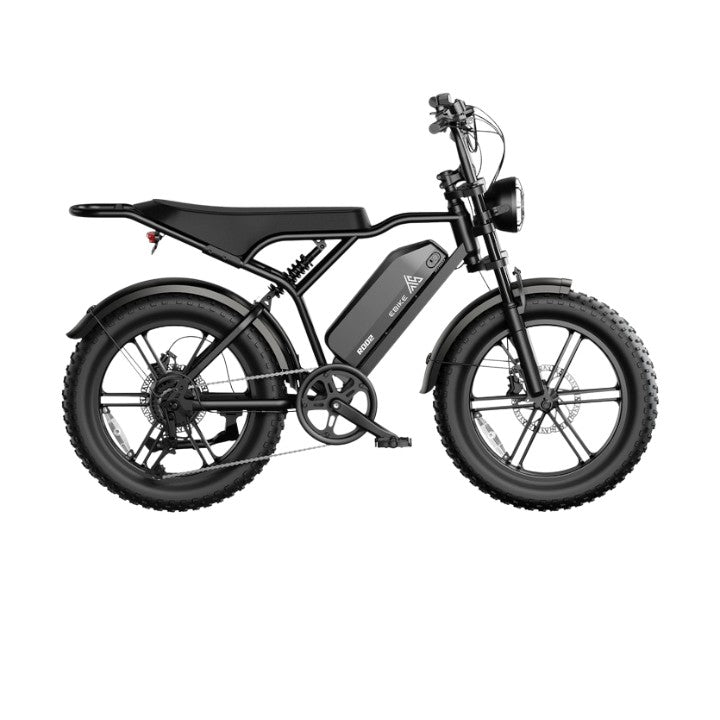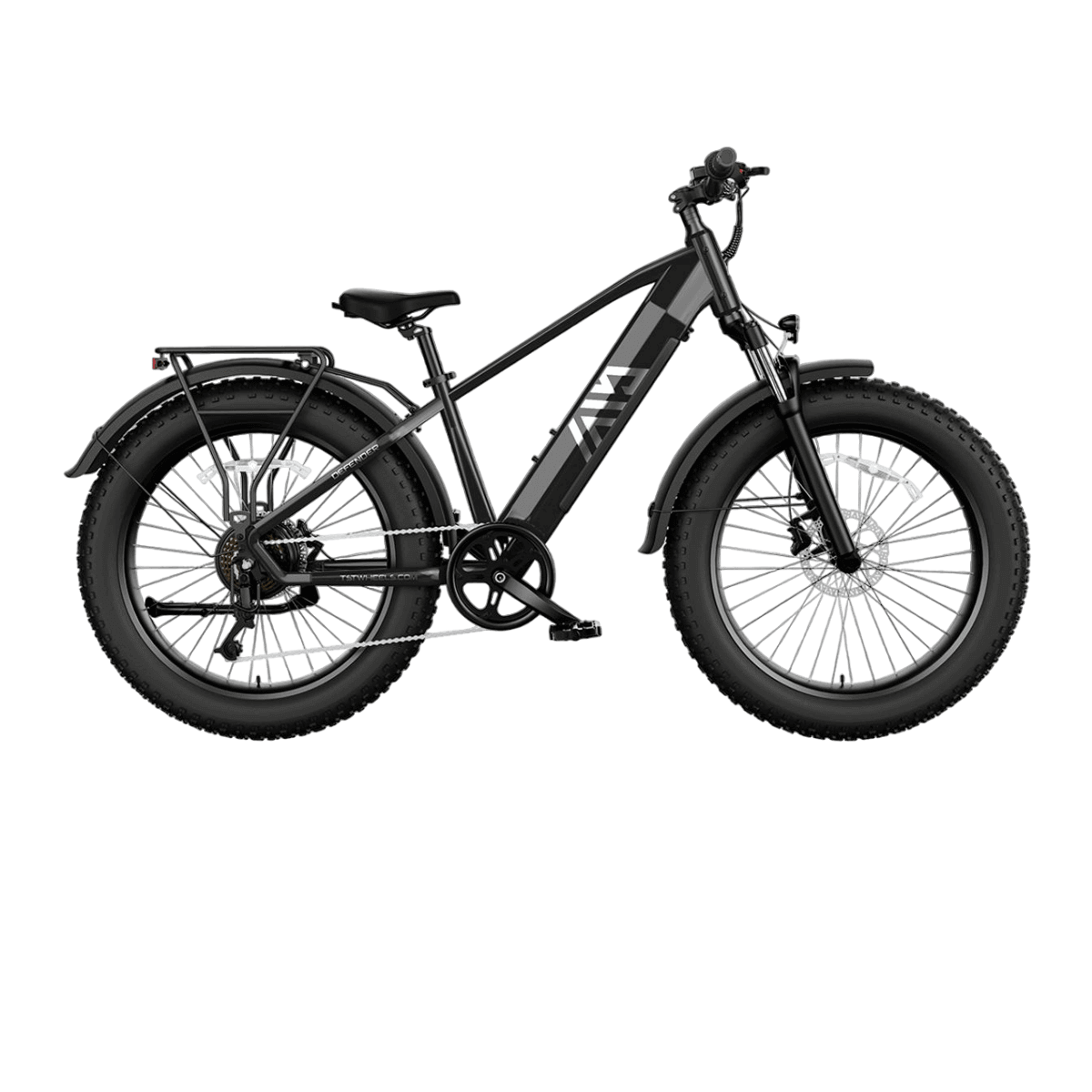E-bikes work by combining human pedaling with electric motor assistance, powered by a rechargeable battery and managed by an intelligent controller. Sensors detect your input and adjust the motor’s power, offering either pedal-assist or throttle-driven acceleration. The result: a seamless, energy-efficient ride that conquers hills, extends range, and transforms daily commuting or adventure cycling.
How Do E-Bikes Work and What Are Their Main Components?
E-bikes work by integrating four essential components: the motor, battery, controller, and sensors. The battery stores energy, the controller manages power flow, and sensors (torque or cadence) detect your pedaling effort. The motor, placed in the hub or crank, converts electrical energy into mechanical force, propelling the bike forward. TST EBike models exemplify this synergy, delivering a smooth, responsive ride for every user.
Chart: Key Components of How Do E-Bikes Work
| Component | Function |
|---|---|
| Motor | Converts battery power to mechanical propulsion |
| Battery | Stores energy, typically lithium-ion |
| Controller | Regulates power delivery and system operation |
| Sensors | Detect rider input (torque, cadence, speed) |
| Display | Shows speed, battery, and assist level |
What Is Pedal-Assist and How Does It Shape How Do E-Bikes Work?
Pedal-assist is a core feature in how do e-bikes work. When you pedal, sensors (either cadence or torque) communicate with the controller, which then activates the motor to provide proportional assistance. The harder you pedal, the more boost you receive. This system feels natural and extends battery range, making TST EBike’s pedal-assist ideal for both fitness and commuting.
How Does Throttle Control Change How Do E-Bikes Work?
Throttle control lets you accelerate without pedaling, much like a scooter. By twisting a grip or pressing a lever, you send a signal to the controller, which delivers instant power from the battery to the motor. TST EBike models often combine throttle and pedal-assist, giving riders flexibility for quick starts, steep climbs, or when you simply want to rest your legs.
How Do Different E-Bike Motors Impact How Do E-Bikes Work?
E-bike motors come in two main types: hub motors (front or rear wheel) and mid-drive motors (crank area). Hub motors provide smooth, quiet power, ideal for city riding. Mid-drive motors deliver torque through the drivetrain, excelling on hills and rough terrain. TST EBike offers both 26-inch (for snow, sand, and trails) and 27-inch (for commuting and mountain biking) models, each optimized for their respective environments.
What Role Does the Controller Play in How Do E-Bikes Work?
The controller is the “brain” of the e-bike, managing power flow from the battery to the motor based on sensor data and user input. It regulates assist levels, monitors battery status, and ensures safety by preventing overcurrent or overheating. Modern controllers, like those in TST EBike, often integrate with LCD displays for real-time feedback and ride customization.
How Do Sensors and Displays Enhance How Do E-Bikes Work?
Sensors measure cadence, torque, and speed, sending data to the controller to fine-tune motor output. Displays mounted on the handlebars show speed, battery level, assist mode, and range, empowering riders to monitor and adjust their ride. TST EBike’s intuitive displays make understanding and controlling your e-bike effortless, even for beginners.
Why Is Battery Technology Critical to How Do E-Bikes Work?
Lithium-ion batteries are the heart of how do e-bikes work, offering high energy density, long life, and fast charging. TST EBike’s batteries are removable for convenient charging and replacement. Battery size (measured in watt-hours) directly affects range; larger batteries mean longer rides but add weight. Proper care-charging after each ride, avoiding deep discharge-maximizes lifespan.
Chart: Battery Size and Estimated Range
| Battery Capacity (Wh) | Estimated Range (Miles) |
|---|---|
| 360 | 20–30 |
| 480 | 30–45 |
| 720 | 40–60 |
How Do E-Bikes Work in Different Riding Modes?
E-bikes typically offer three modes: pedal-only (no assist), pedal-assist, and throttle. In pedal-only, the bike functions like a standard bicycle. Pedal-assist blends your effort with motor power, while throttle mode provides motor power on demand. TST EBike’s versatile systems let you switch modes to suit terrain, fitness goals, or commuting needs.
Which TST EBike Models Showcase How Do E-Bikes Work Across Terrains?
Models like the TST Highlander and TST Explorer showcase how e-bikes work across terrains. With robust motors, advanced pedal-assist systems, and long-range batteries, they handle everything from city streets to rugged trails. These TST Ebikes exemplify smooth performance, versatility, and durability in diverse riding environments.
| Model | Wheel Size | Terrain Suitability | Control Systems |
|---|---|---|---|
| TST EBike 26" | 26-inch | Snow, sand, rough trails | Pedal-assist & throttle |
| TST EBike 27" | 27-inch | Commuting, mountain | Pedal-assist & throttle |
TST EBike’s 26-inch models excel in challenging conditions, while 27-inch models are perfect for urban and mountain riding-each demonstrating how do e-bikes work in their element.
How Do Electric Bikes Work To Provide Pedal Assistance?
Electric bikes provide pedal assistance by using sensors that detect when the rider pedals. These sensors signal the motor to deliver power proportional to pedaling effort, making pedaling easier and enhancing speed. This system helps reduce rider fatigue and improves efficiency, especially on hills or longer rides.
Electric bikes provide pedal assistance through a combination of advanced sensors and an electric motor that work together seamlessly. When you start pedaling, sensors—typically cadence sensors or torque sensors—detect your pedaling motion or the amount of force you apply to the pedals. These sensors then send signals to the motor controller, which activates the motor to deliver power that matches your pedaling effort. This means the harder you pedal, the more assistance you get, making riding smoother and less strenuous.
This pedal-assist system is especially helpful when tackling hills, long distances, or strong headwinds, as it reduces rider fatigue and allows for longer, more enjoyable rides. Many e-bikes also offer multiple assist levels, letting riders customize how much power they receive. Overall, this technology enhances cycling efficiency while maintaining the natural feel of traditional biking.
How Do Electric Bikes Work Using Battery And Motor Systems?
Electric bikes use a battery and motor system where the battery stores electrical energy and powers the motor. When activated, the motor assists pedaling or drives the bike directly. The system is controlled by a throttle or pedal-assist sensors, ensuring smooth power delivery and efficient energy use during riding.
Electric bikes operate through an integrated battery and motor system designed to make cycling easier and more efficient. The battery, usually a rechargeable lithium-ion type, stores electrical energy that powers the motor. Depending on the e-bike design, the motor can either assist the rider’s pedaling effort or directly drive the bike using a throttle. The battery’s capacity determines the range and duration of assistance, so higher-capacity batteries allow for longer rides without recharging.
The motor system is carefully managed by a controller that responds to pedal-assist sensors or throttle inputs, delivering smooth and consistent power to the wheels. This system ensures efficient energy use, preventing sudden surges or waste. Many e-bikes also feature multiple power modes, allowing riders to choose how much help they want based on terrain or stamina. Together, the battery and motor create a seamless riding experience that combines traditional cycling with modern electric power.
Buying Tips
When buying an e-bike, focus on battery range, motor type, and control features. Choose a TST EBike with the right wheel size for your terrain-26-inch for off-road, 27-inch for commuting. Look for models with both pedal-assist and throttle for maximum flexibility. Ensure the bike has a reliable controller, clear display, and removable battery for easy charging. Test ride different models to find your ideal fit, and always buy from established brands with strong support and warranty.
TST EBike Expert Views
“At TST EBike, we believe every rider deserves a seamless blend of human and electric power. Our e-bikes are engineered for intuitive control, robust performance, and long-lasting reliability. Whether you’re tackling mountain trails or city streets, understanding how do e-bikes work empowers you to ride farther, faster, and with greater confidence.” – TST EBike Technical Team
FAQ
How do e-bikes work when the battery dies?
Most e-bikes, including TST EBike models, can be pedaled like a regular bike if the battery is depleted, though the extra weight may be noticeable.
Can I use both pedal-assist and throttle on the same ride?
Yes, many TST EBike models allow switching between pedal-assist and throttle for a customized riding experience.
How do e-bikes work on hills?
With pedal-assist or throttle, the motor provides extra torque, making hill climbs much easier than on a traditional bike.
Are e-bikes safe in the rain?
TST EBike designs its electronics and batteries to be water-resistant, but avoid submerging the bike and always dry it after wet rides.
What maintenance do e-bikes require?
Regularly check the battery, clean the drivetrain, inspect brakes, and update firmware if available. TST EBike offers support and parts for easy upkeep.








Leave a comment
All comments are moderated before being published.
This site is protected by hCaptcha and the hCaptcha Privacy Policy and Terms of Service apply.